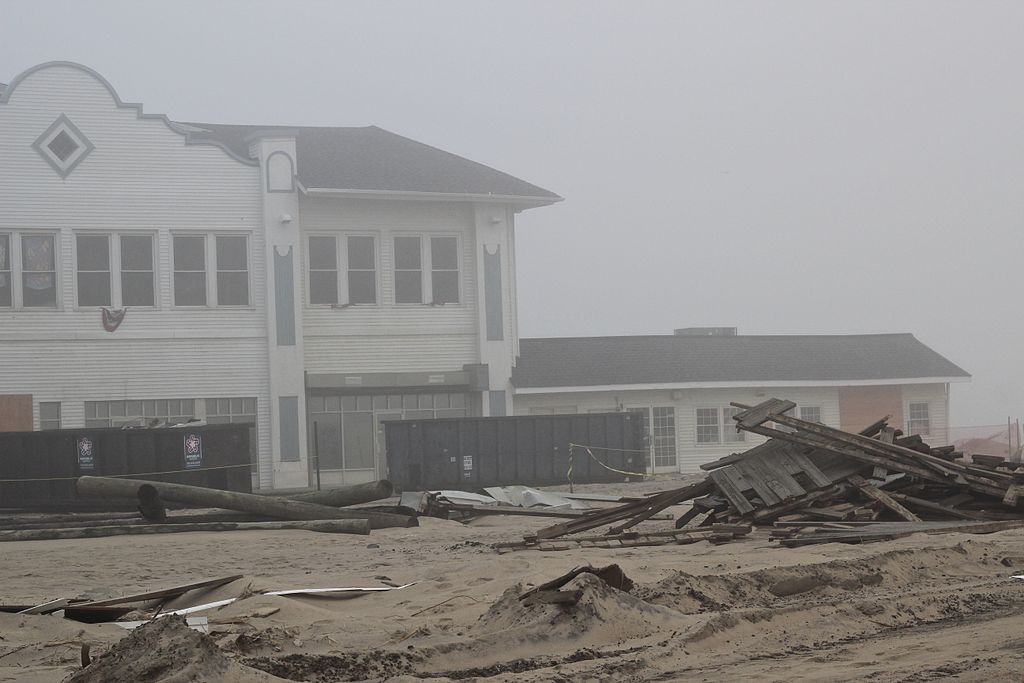Leaders of America’s design and construction industry – along with building owners and operators - for the first time have agreed to promote resilience in contemporary planning, building materials, design, construction and operational techniques as the solution to making the nation’s aging infrastructure more safe and secure.
CEOs of almost two-dozen leading design and construction industry associations with more than 700,000 members generating almost $1 trillion in GDP today used the occasion of “Building Safety Month” to issue a joint statement on resilience, which can be found here.
The statement was unveiled at a press conference at the National Building Museum, where a major exhibition titled Designing for Disaster presents design and building solutions for disaster mitigation, opened May 11.
“We recognize that natural and manmade hazards pose an increasing threat to the safety of the public and the vitality of our nation,” reads the statement, in part. “We further recognize that contemporary planning, building materials, design, construction and operational techniques can make our communities more resilient to these threats.”
The CEOs committed their design and construction sector organizations to significantly improve the resilience of the nation’s entire built environment through research into new materials, construction procedures and other methods to improve the standard of practice.
Among other things, they also committed the industry to educating itself through continuous learning; to advocating for effective land use policies; to responding to disasters alongside first responders; and to planning for future events, with a strategy for fast recovery.
“Resilient design places architects at the center of the solution, with particular emphasis on the private, non-governmental sectors," said American Institute of Architects CEO Robert Ivy, FAIA. “I would like to congratulate my fellow leaders in the design and construction sector for joining together to make sure resiliency is not viewed as just a fad but remains front and center in our efforts moving forward.”
In addition to the AIA, here is a list of organizations signing onto the joint statement on resilience:
American Council of Engineering Companies
American Planning Association
American Society of Civil Engineers
American Society of Interior Designers
American Society of Landscape Architects
American Society of Plumbing Engineers
ASHRAE
Associated Builders and Contractors
Associated General Contractors of America
Building Owners and Managers Association
International Code Council
International Interior Design Association
Lean Construction Institute
National Association of Home Builders
National Institute of Building Sciences International Facility Management Association
National Society of Professional Engineers
Royal Institute of Chartered Surveyors
Urban Land Institute
U.S. Green Building Council
About The American Institute of Architects
Founded in 1857, members of the American Institute of Architects consistently work to create more valuable, healthy, secure, and sustainable buildings, neighborhoods, and communities. Through nearly 300 state and local chapters, the AIA advocates for public policies that promote economic vitality and public wellbeing.
Members adhere to a code of ethics and conduct to ensure the highest professional standards. The AIA provides members with tools and resources to assist them in their careers and business as well as engaging civic and government leaders, and the public to find solutions to pressing issues facing our communities, institutions, nation and world. Visit www.aia.org.
Related Stories
| Sep 22, 2014
4 keys to effective post-occupancy evaluations
Perkins+Will's Janice Barnes covers the four steps that designers should take to create POEs that provide design direction and measure design effectiveness.
| Sep 22, 2014
Sound selections: 12 great choices for ceilings and acoustical walls
From metal mesh panels to concealed-suspension ceilings, here's our roundup of the latest acoustical ceiling and wall products.
| Sep 15, 2014
Ranked: Top international AEC firms [2014 Giants 300 Report]
Parsons Brinckerhoff, Gensler, and Jacobs top BD+C's rankings of U.S.-based design and construction firms with the most revenue from international projects, as reported in the 2014 Giants 300 Report.
| Sep 9, 2014
Using Facebook to transform workplace design
As part of our ongoing studies of how building design influences human behavior in today’s social media-driven world, HOK’s workplace strategists had an idea: Leverage the power of social media to collect data about how people feel about their workplaces and the type of spaces they need to succeed.
| Sep 8, 2014
First Look: Foster + Partners, Fernando Romero win competition for Mexico City's newest international airport
Designed to be the world’s most sustainable airport, the plan uses a single, compact terminal scheme in lieu of a cluster of buildings, offering shorter walking distances and fewer level changes, and eliminating the need for trains and tunnels.
| Sep 3, 2014
New designation launched to streamline LEED review process
The LEED Proven Provider designation is designed to minimize the need for additional work during the project review process.
| Sep 2, 2014
Ranked: Top green building sector AEC firms [2014 Giants 300 Report]
AECOM, Gensler, and Turner top BD+C's rankings of the nation's largest green design and construction firms.
| Sep 1, 2014
Ranked: Top federal government sector AEC firms [2014 Giants 300 Report]
Clark Group, Fluor, and HOK top BD+C's rankings of the nation's largest federal government design and construction firms, as reported in the 2014 Giants 300 Report.
| Aug 19, 2014
HOK to acquire 360 Architecture
Expected to be finalized by the end of October, the acquisition of 360 Architecture will provide immediate benefits to both firms’ clients worldwide as HOK re-enters the sports and entertainment market.
| Aug 11, 2014
Air Terminal Sector Giants: Morphing TSA procedures shape terminal design [2014 Giants 300 Report]
The recent evolution of airport terminals has been prompted largely by different patterns of passenger behavior in a post-9/11 world, according to BD+C's 2014 Giants 300 Report.

















